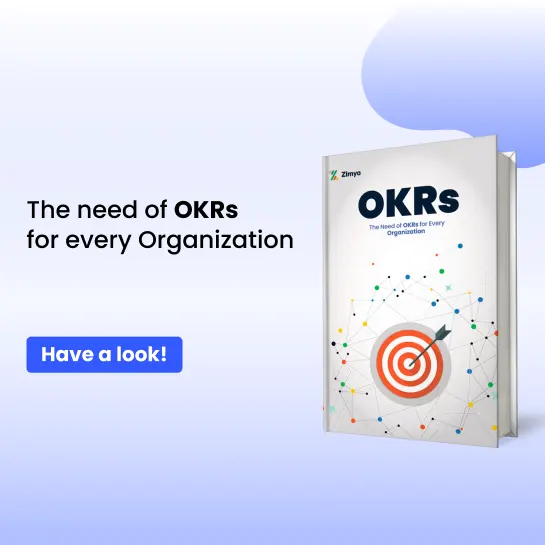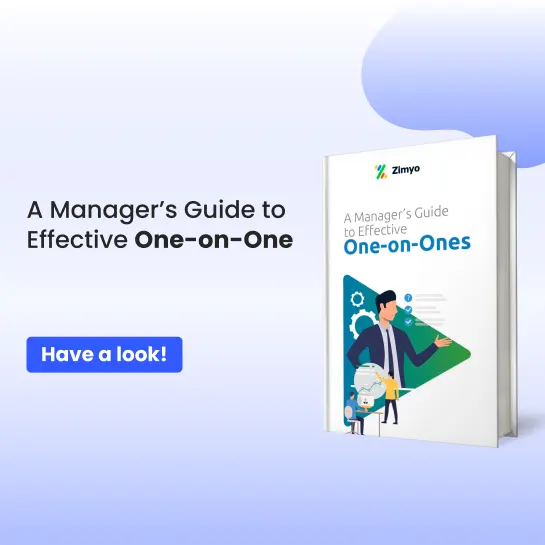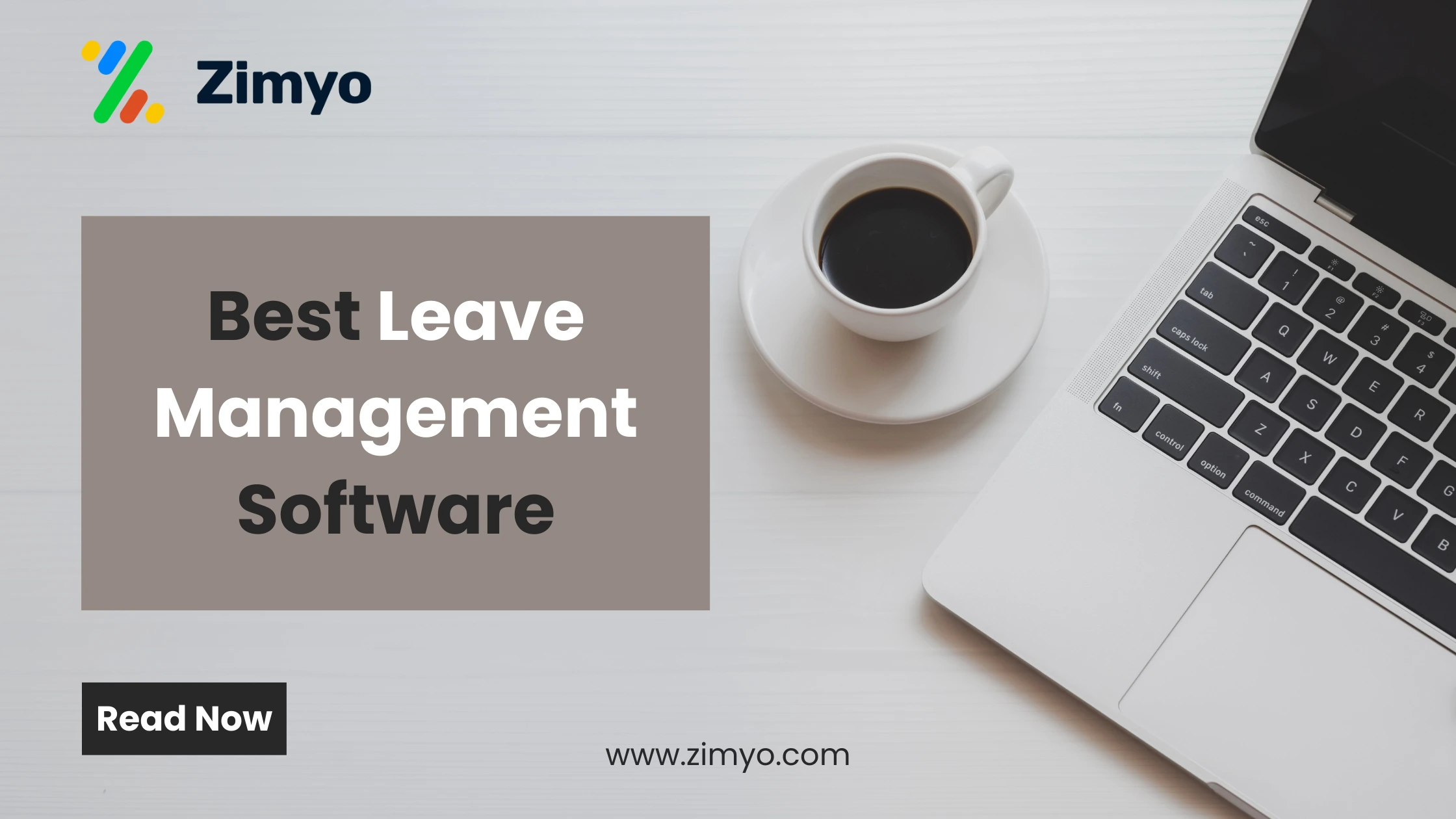Employee leave management is perhaps the simplest yet most important aspect of HR procedures. An incorrectly monitored leave, an absent approval, or an incorrect leave balance can initiate payroll discrepancies, legal disputes, and even employee grievances. Most companies, particularly expanding ones, continue to use spreadsheets, email, or manual journals to manage leave applications. Although it may appear bearable with a small workforce, it soon turns into bedlam as the company expands.
This is where a Leave Management System comes into play. Automating the leave process saves companies time, minimizes mistakes, and provides transparency between the management and employees.
This blog will walk you through a step-by-step, detailed guide to implementing a Leave Management System, tell you why you need it, point out common mistakes to avoid, and how to select the best leave management software for your organization.
According to a study by Randstad India, nearly 40% of employees in India experience anxiety when asking their supervisors for leave. Likewise, in the United States, around 39% of workers confessed to feeling stressed or guilty about taking time off they rightfully deserve.
What is a Leave Management System?
A Leave Management System is an online solution that aids in the management, tracking, and automation of employee leave requests and approvals by a business. It is a replacement for manual methods such as email exchanges or Excel spreadsheets with a centralized platform where an employee can request leave, a manager can reject or approve it, and an HR can keep track of accurate records for payroll and compliance purposes.
Some companies term it as an employee leave management system, whereas others use an attendance and leave management software. Whatever it is called, the intent remains the same: to streamline leave management without compromising on accuracy and fairness.
Contemporary web-based leave management systems tend to be integrated with attendance trackers, payroll software, and HRMS platforms to provide an end-to-end workforce management solution.
Why Do Businesses Require a Leave Management System?
Let’s be honest, leave management is underrated. Most startups and even mid-level businesses view it as another HR chore, when actually, it has an immediate effect on productivity, employee satisfaction, and even financial compliance.
Here are some reasons why an investment in the best leave management system is of essence:
- Eliminates Manual Errors: Miscounted sick leaves, incorrect leave balances, or forgotten holidays create tension between employees and HR. An electronic system prevents errors.
- Saves HR Time: HR teams save hours from being wasted on emails and spreadsheets. They can devote their time to strategic activities.
- Ensures Policy Compliance: All firms have specific leave policies. A leave management software makes sure that policies are enforced uniformly.
- Boosts Employee Satisfaction: Staff value openness. Their knowledge of leave balances and access to simple booking of time off creates trust.
- Offers Insights: Thanks to analytics in an online leave management platform, managers are able to detect patterns of absenteeism and enhance workforce planning.
Check Out Our Blog on List of Holidays in 2025
Step-by-Step Guide to Leave Management System Setup
Setting up a leave and attendance management system is not simply a matter of purchasing software. It’s about how technology fits within your company’s culture and policies. Let’s divide it into steps.
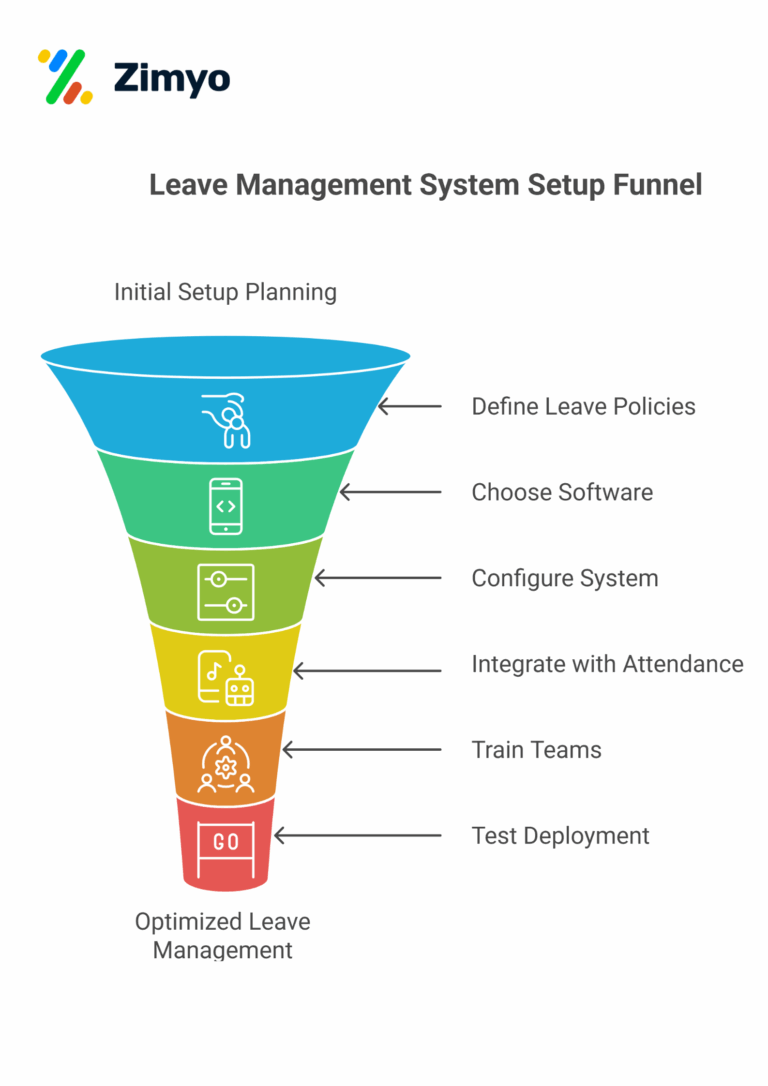
Step 1: Clarify Your Leave Policies
Step 1: Clarify Your Leave Policies
This starts before setting up any tool. If policies are ambiguous, no software will ever address confusion.
Here’s what you have to specify:
- Types of leave (casual, sick, maternity, earned, compensatory off, etc.)
- Eligibility (who and when can take what kind of leave)
- Accrual method (monthly, yearly, or at the time of joining)
- Carry-forward rules (do unused leaves carry forward to the following year?)
- Encashment (can employees exchange unused leaves for salary?)
- Approval hierarchy (direct manager, department head, HR, etc.)
Example:
If the company provides 12 sick leaves, 10 casual leaves, and 15 earned leaves annually, all of these must be set in the employee leave management system from the beginning.
I was able to implement the platform on my own. It helps in assigning the tasks to other employees, conducting surveys and polls, and much more. The ease of use and self-onboarding is something that I would like to appreciate.
Sonali, Kommunicate
Zimyo simplifies attendance management for our organization. The leave and attendance are so streamlined that we have never faced any difficulties with the system.
Anurag, Eggoz Nutrition
Step 2: Select the Best Leave Management Software
All software are not the same. Selecting the optimum leave management software for your company is essential.
Here’s what to watch out for:
- Simple and user-friendly interface
- Cloud-based access (employees should apply for leave from anywhere)
- Mobile compatibility
- Integration with attendance, payroll, and HRMS
- Policy customization options
- Analytics and reporting features
- Automated notifications for approvals
Why Zimyo is the Best Option
Of the numerous alternatives, Zimyo Leave Management System is a full-featured solution that has been trusted by 2500+ organizations globally.
Here’s why Zimyo is the best leave management software:
- Cloud-based access so employees can request leave at any time, from anywhere
- Mobile-friendly platform with real-time notifications and approvals
- Smooth integration with payroll and attendance systems
- Customizable leave policies to align with company-specific policies
- Analytics & insights to monitor absenteeism trends and leave usage
In contrast to conventional systems, Zimyo’s online leave management system streamlines HR activities, increases transparency, and eliminates hours of administrative work each month
Step 3: Configure the System
After you choose the software, it’s time to set it up as per your company guidelines.
- Add official holidays
- Configure different types of leaves and map them to employee groups
- Configure accruals and carry-forward rules
- Configure approval workflows
- Grant admin permissions to HR managers
This setup will make the leave management system function in coordination with your current HR process.
Step 4: Integrate with Attendance System
A leave and attendance management system works best when integrated with employee attendance records.
For instance:
- In case an employee is absent without requesting leave, the system must automatically record it.
- If an employee puts in overtime, the system can capture compensatory offs.
Integration with biometric data, punch-in applications, or even GPS-based attendance makes leave tracking more precise.
Step 5: Train Your Employees and HR Team
Even the most effective leave management software will not be of use if employees aren’t able to use it. Organize short training sessions in order to clarify:
- How to submit a leave application
- How managers can reject/approve leave requests
- How HR can run reports
Training minimizes confusion and helps with adoption company-wide.
Step 6: Run a Pilot Test
Instead of rolling out the system to everyone at once, start with a small department or team. Monitor:
- How employees are using the system
- Whether managers face delays in approvals
- If reports are accurate
Use feedback to make adjustments before full deployment.
Step 7: Monitor and Improve Continuously
After launching the online leave management system, don’t just forget about it. Keep an eye on:
- Trends of absenteeism
- Payroll integration accuracy
This makes your attendance and leave management software still effective and continues to serve your company’s changing demands.
Common Mistakes to Avoid When Implementing a Leave Management System
Even as implementing an employee leave management system is easy, businesses tend to make blunders that lower its efficacy. Below are some to be aware of:
- Not Defining Policies Clearly: If rules for leave are not clearly defined, employees will abuse them, while managers will accept inconsistently.
- Ignoring Local Labor Laws: Each nation (and, on occasion, state) has unique leave policies. Failure to comply may result in fines.
- Selecting Overly Complicated Software: An application that contains too many features that are difficult to understand might annoy workers. Keep it simple.
- Failing to Train Employees: Don’t expect everyone to sort it out for themselves. Failure to train can result in the system being abused.
- Failing to Integrate with Payroll: If your leave management system doesn’t sync with payroll, you’ll still face salary errors.
- Skipping Pilot Testing: Rolling out the system company-wide without testing can cause chaos if errors exist.
I was able to implement the platform on my own. It helps in assigning the tasks to other employees, conducting surveys and polls, and much more. The ease of use and self-onboarding is something that I would like to appreciate.
Sonali, Kommunicate
Zimyo simplifies attendance management for our organization. The leave and attendance are so streamlined that we have never faced any difficulties with the system.
Anurag, Eggoz Nutrition
Features to Look for in the Best Leave Management System
All leave management software is not created equal. Some only provide the bare essentials such as leave request and approval, while others offer a complete attendance and leave management software experience with features such as analytics, payroll integration, and mobile apps.
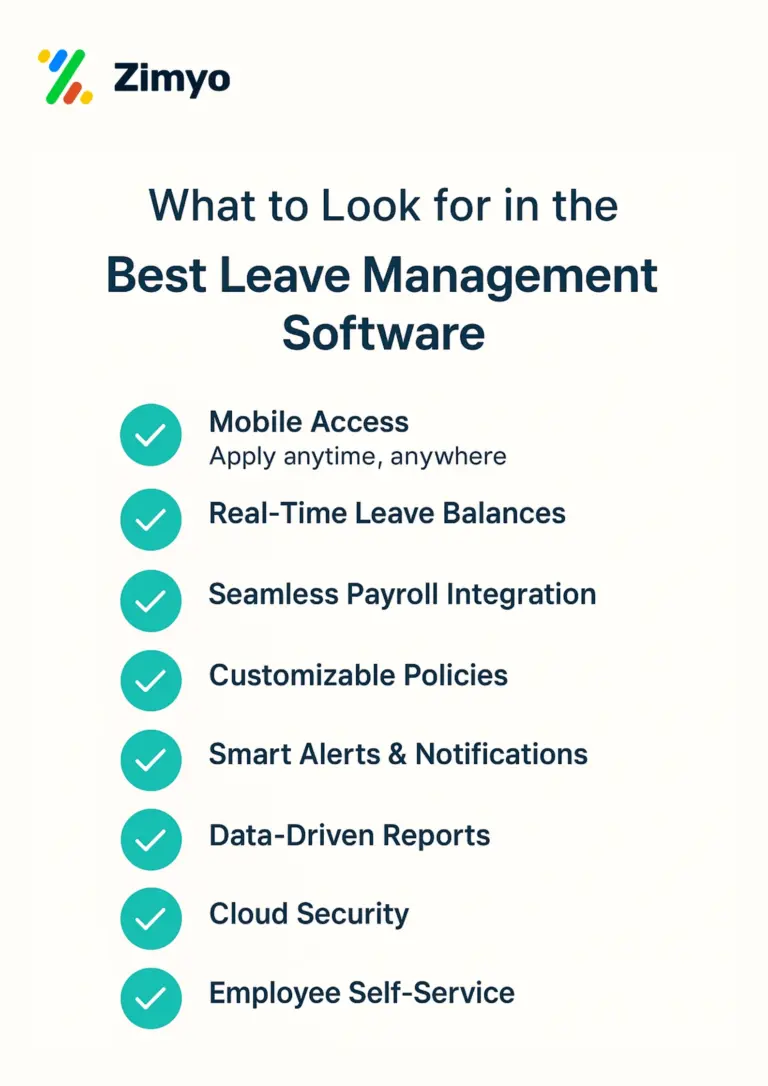
In selecting the best leave management system for your business, ensure it provides the following key features:
1. Mobile Accessibility
In the modern world, everything is done on the move. Your staff shouldn’t need to open a desktop application just to request leave. A quality online leave management system should have a mobile application where staff can:
- Request leave at any time and from anywhere
- Instantly view leave balances
- Receive notifications of approvals or rejections
This makes it smooth and also cuts down HR’s reliance on emails.
2. Real-Time Leave Tracking
Employees and managers must always be able to see:
- Current leave balances
- Upcoming holidays
- Team availability for a certain day
This avoids resource conflicts, prevents projects from being adversely affected due to overlapping leaves, and increases transparency.
3. Payroll and HRMS Integration
Perhaps the greatest benefit of a leave and attendance management system is its connectivity with payroll. This can ensure that:
- Salaries are deducted for unpaid leaves automatically
- Encashment of leaves shows up properly in payslips
- Payroll reports are always precise
Without this functionality, HR teams still spend hours matching leave data with payroll.
4. Policy Customization
Each firm has specific leave policies. Some companies, for instance, permit casual leaves to be carried forward, but others don’t. A comprehensive employee leave management system should enable HR to customize:
- Types of leave (sick, casual, maternity, earned, etc.)
- Rules of eligibility by employee category
- Approval flows (direct manager, HR, or multi-level)
- Accrual and carry-forward rules
Flexibility ensures that the system evolves with your company rather than compelling you to revise policies to accommodate the tool.
5. Automated Notifications and Reminders
Imagine managers missing leave requests for approval or employees having no idea whether their request is pending or not. Intelligent attendance and leave management software must provide automatic reminders for:
- New leave requests
- Pending approvals
- Status updates for employees
This minimizes delays and keeps everyone informed.
6. Comprehensive Analytics and Reporting
Aside from approvals, the system needs to assist you in making more informed workforce decisions. Ensure that dashboards give you insights into:
- Leave usage patterns
- Hotspots of high absenteeism
- Leave balances by departments
- Seasonal leave patterns
With this information, HR leaders can pre-empt workloads, recruit backup personnel over high leave periods, and enhance overall productivity.
7. Cloud-Based and Secure
Data security is critical. Choose a cloud-based leave management software that offers role-based access controls, secure logins, and data backups. This ensures sensitive HR data stays safe while still being accessible anytime, anywhere.
8. Employee Self-Service
The best leave management system should empower employees to manage their own leave-related queries without constantly reaching out to HR. With self-service, they can:
- Apply for leave
- View balances
- Check holiday calendars
- Monitor approval status
This saves HR work while providing employees with control and transparency.
Challenges in Manual Leave Management
Prior to the advent of contemporary leave management software, the majority of organizations used outmoded practices such as spreadsheets, emails, or even hard registers to monitor employee leaves. Although such practices might be feasible for extremely small businesses, they become a nightmare in no time with growing teams. Let us discuss some of the typical issues HR teams and managers encounter while manually tracking leaves:
I was able to implement the platform on my own. It helps in assigning the tasks to other employees, conducting surveys and polls, and much more. The ease of use and self-onboarding is something that I would like to appreciate.
Sonali, Kommunicate
Zimyo simplifies attendance management for our organization. The leave and attendance are so streamlined that we have never faced any difficulties with the system.
Anurag, Eggoz Nutrition
1. Time-Consuming Processes
Manual email checking, spreadsheet updating, and leave balance tracking wastes precious HR time. Rather than working on strategic initiatives, HR spends hours on mundane tasks.
2. Human Errors
Manual records and spreadsheets are subject to errors – such as miscalculating leave, double posting, or forgotten approvals. A tiny error can cause payroll discrepancies and employee discontent.
3. Lack of Transparency
Employees usually are not aware of how much leave is left to them or if their leave is approved. This opacity generates confusion and results in constant requests to HR.
4. Delays in Approvals
Manual configuration means that leave applications usually remain pending in managers’ mailboxes or are lost, creating inconvenience for workers and scheduling pandemonium at the last moment.
5. Challenges in Compliance
All organizations have to adhere to labour laws and compliance regulations regarding paid leaves, sick leaves, and holidays. Manually monitoring these raises the risk of non-compliance, leading to fines.
6. No Real-Time Insights
There are no real-time employee availability insights without an online leave management system. Managers are unable to view real-time employee availability. This leads to inefficient workforce planning and project scheduling.
7. Scalability Issues
What is ideal for a 10-member team is not ideal for a 100 or 500-member company. Manual systems do not scale, and this causes operational bottlenecks.
Final Thoughts
Leave Management System is no longer a “nice-to-have.” It’s a need-to-have for organizations that want to save HR time, eliminate payroll errors, and enhance employee satisfaction
The installation process may appear daunting at first, but if you just use the step-by-step method, define policies, select the appropriate tool, configure, integrate, train, test, and optimize – you will have a clear and seamless system in place.
If you’re looking for a reliable, easy-to-use, and customizable solution, Zimyo Leave Management Software is one of the best choices in the market. From policy customization to real-time leave tracking and payroll integration, it offers everything businesses need to streamline leave and attendance processes.
Investing in the right employee time off management software is not simply about streamlining approvals, it’s about building a culture of transparency, equity, and trust within your organization.
FAQs
What is the leave management system workflow?
It’s the process of applying, approving, and tracking employee leaves using a leave management system.
What is the leave management process in HR?
It’s how HR handles leave requests, balances, approvals, and compliance, often through leave management software.
How to manage leave effectively?
Use clear policies, automate with an online leave management system, and give employees visibility into their balances.
What is LMS leave?
LMS leave means managing employee leaves digitally through a Leave Management System.

